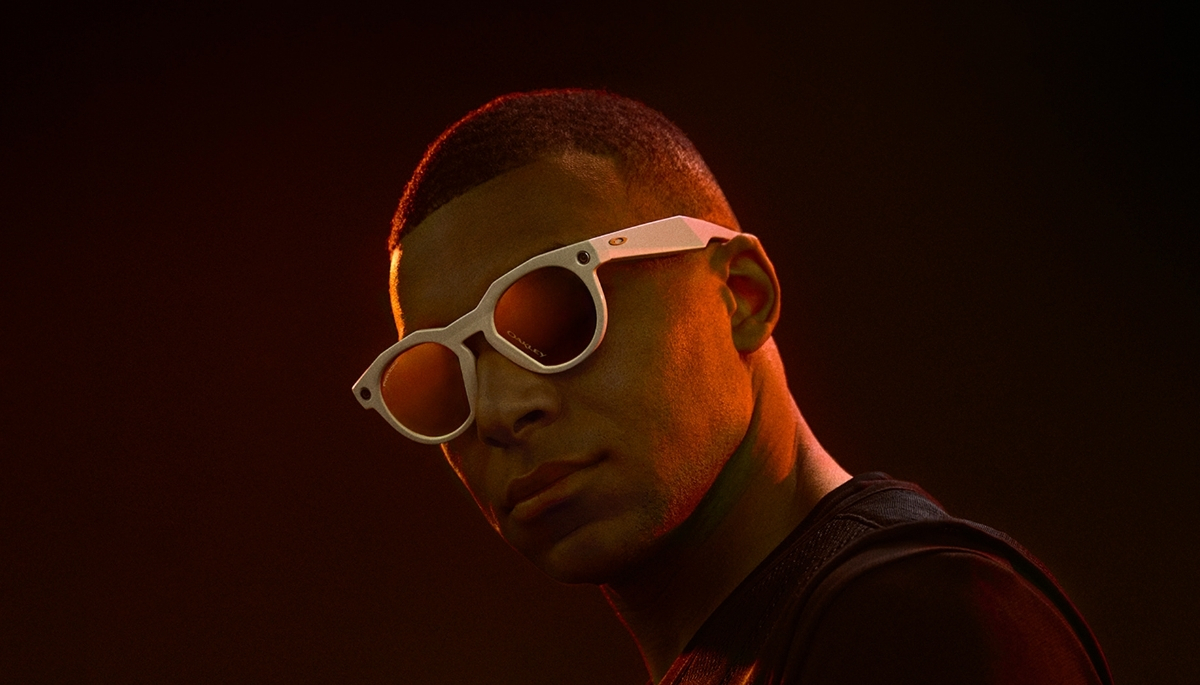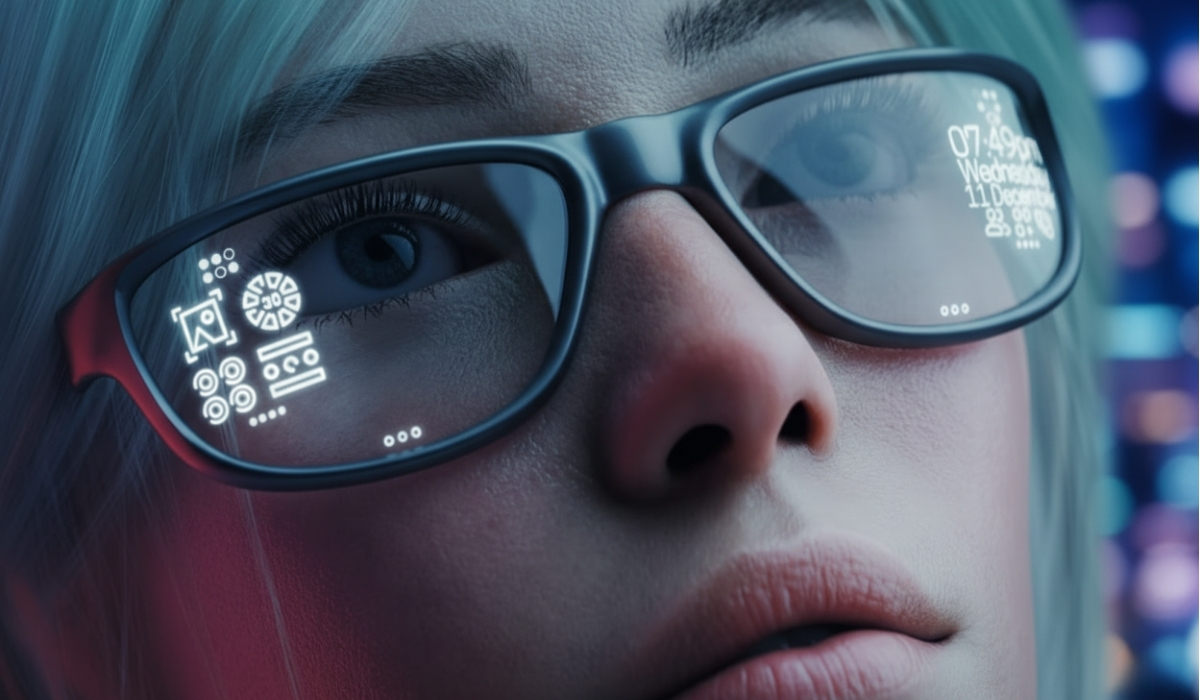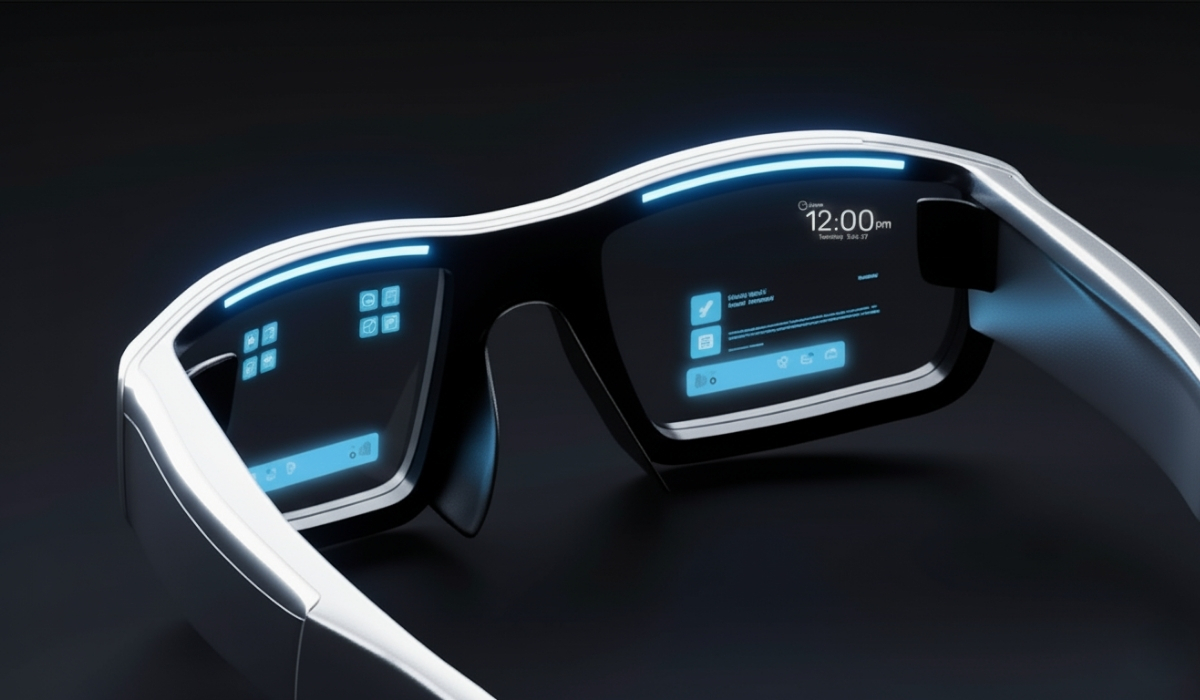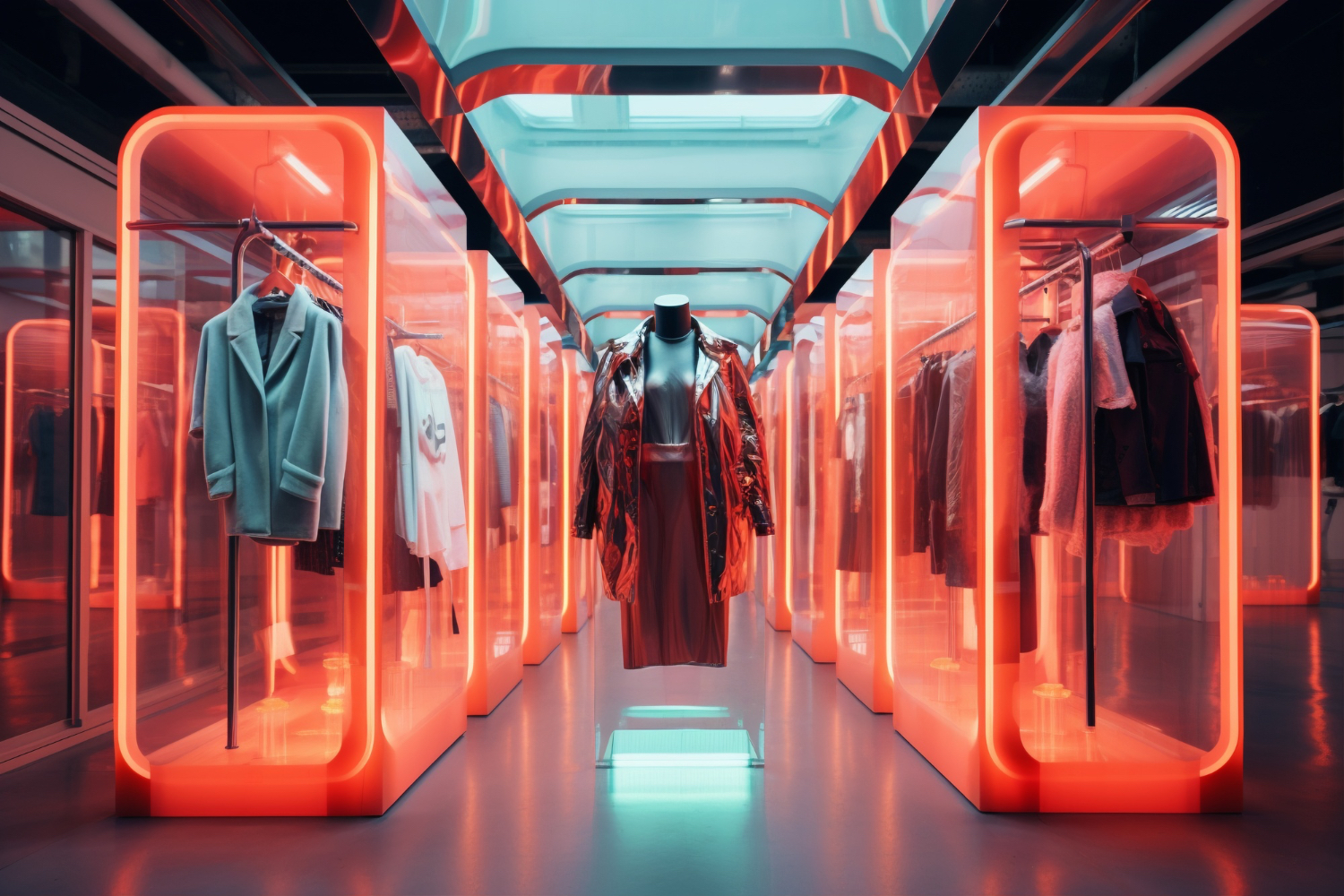AI and Smart Glasses in 2025: The Future of Immersive Shopping and How artlabs Leads the Way

2025 marks the moment when AI glasses finally move beyond tech fairs and fancy showcases and becomes a part of our daily lives. Thanks to AI-powered smart glasses and spatial computing, digital content no longer lives behind screens, it lives with us. From virtual try-ons to AI-driven immersive 3D experiences, the future of online shopping and AI-powered consumer interaction is right before our eyes. Both literally and figuratively.
Comfort + on-device AI + spatial mapping. That’s the simple formula defining the new generation of smart glasses. With this perfect blend, 2025 smart glasses have evolved beyond purpose, they’ve become true wearable computers. AI glasses listen, see, and respond, offering seamless voice and vision assistance. Augmented Reality (AR) glasses bring digital and physical worlds together through spatial overlays that feel natural and intuitive. From Meta Ray-Ban Display and Snap Spectacles to XREAL, Rokid, and Viture, the best models now unite intelligence, comfort, and awareness in one seamless form. Wearability and everyday functionality finally go hand in hand.
If you're ready, let's dive into the 2025 AI Glasses, moving away from clunky, “geeky”-looking devices toward wearables that are functional, socially wearable, and offer an ahead-of-its-time aesthetic.

Key Insights
What does “Less Screen, More Scene” mean?
AI-powered smart glasses merge the “screen” into your field of view, enabling hands-free immersive 3D experiences in daily life and eCommerce.
This marks a shift from screen time to scene time — where reality becomes the interface. In 2025, AI glasses stop separating us from the real world. Instead, they bring digital content into it. This shift makes hands-free 3D experiences possible in both daily life and eCommerce.
Why does wearability lead?
Sub-50 g frames, prescription options, and heat-efficient chips make AI glasses finally fit for everyday life.
Wearability is no longer a bonus feature for high-tech devices. It’s the new standard. With lightweight frames, advanced cooling systems, and multiple lens options, this new generation of AI glasses meets that expectation with ease. Today, carrying AI technology in daily life feels practical and stylish at the same time. Design finally meets function, and users no longer have to choose between style or performance.
How does spatial computing change shopping?
Scene understanding anchors true-to-scale products and persistent brand spaces in your environment.
AI glasses now understand surfaces, light, and depth, placing 3D products in real time within our surroundings. Shopping is no longer about scrolling through flat screens. It’s about walking through digital stores that feel alive and connected. Spatial computing gives every product context, turning simple visuals into experiences. Brands can now build always-on 3D stores that customers can visit anytime, anywhere.
What’s new in Virtual Try-On (VTO)?
Cross-device virtual try-on (from phone to glasses) boosts confidence, personalization, and reduces returns.
Virtual try-on is no longer just a Snapchat filter. It has become a truly immersive shopping experience powered by AI. Shoppers can switch between devices to see products in real size, real light, and across different variations. For brands, this means richer data and more confident customers. For users, it means better decisions and a more personal connection with every product.
It’s not just try-before-you-buy; it’s experience-before-you-decide. A true win-win for both sides.
So, what exactly changed in 2025?

The AI Glass Revolution: What’s Different in 2025?
Smarter. Brighter. More Efficient.
The 2025 generation of AI glasses brings spatial mapping, on-device intelligence, brighter micro-displays, and longer battery life — finally moving from prototypes to everyday essentials. From shopping to training and real-time collaboration, AI glasses have become practical tools that blend seamlessly into daily life.
These devices are no longer about showing data; they understand context. 2025 is the year AI glasses truly mature, when technology stops experimenting and starts belonging.
Compared to earlier models, 2025 AI glasses are:
Brighter: Clear visibility even under direct sunlight.
Lighter: Sub-50-gram frames designed for all-day comfort.
More efficient: Heat-controlled chips and extended battery life remove the need for extra hardware.
AI glasses have outgrown their “entertainment-only” image and now empower immersive shopping, workforce training, and real-time operations across industries.
In the U.S. and Europe, brands using AI-driven virtual try-on and e-commerce AR solutions report up to 40% fewer returns and significantly higher conversion rates — a clear sign that hands-free immersive commerce is here to stay.
AI Glasses in Action: Everyday Intelligence Meets Design
Snap Spectacles (2025): Dual-chip AR with gesture + voice for anchored 3D
The new Spectacles combine dual Snapdragon processors with on-device AI to deliver real spatial mapping. Users can interact with floating 3D elements without touching a single button — controlling everything through gestures or voice commands.
Unlike previous models, Spectacles go beyond simple camera lenses, turning AR into a truly interactive, hands-free experience.
This makes virtual try-ons, interactive product demos, and in-store AR navigation seamless and natural. From product testing to guided retail experiences, and even AR-based employee training powered by Snap’s Lens Studio ecosystem, Spectacles open up an entirely new playground for brands exploring the future of immersive, AI-driven retail.
Snap officially announced its next-generation Specs, with CEO Evan Spiegel describing it as “The beginning of a revolution in computing that naturally integrates our digital experiences with the physical world.” The device is expected to launch in 2026.
Meta Ray-Ban Display: Lifestyle frames with multimodal assistant
The Meta Ray-Ban Display reinforces the timeless Ray-Ban design with an AI-powered camera and a built-in voice assistant, making smart eyewear truly wearable. Users can capture POV photos and videos, make calls, or simply say “Show me the red version” to trigger instant product visualization.
By 2025, this won’t feel futuristic anymore — it’s already happening. In the U.S., Meta Ray-Ban Display can only be purchased through demo sessions, and those appointments are fully booked until 2026. More people than ever are discovering and enjoying the accessible, human side of AI technology.
Together with the rumored Meta × Oakley Sport Edition, Meta’s ecosystem shows how AI glasses are evolving beyond tech showcases into lifestyle and performance design. While the Meta Ray-Ban Display focuses on everyday simplicity and effortless interaction, the upcoming Meta × Oakley Sport Edition aims to push performance boundaries with AI motion tracking and voice control.
It’s no surprise that Meta Ray-Ban Display made it to TIME’s list of Best Inventions of 2025 — proving that smart glasses are no longer just gadgets, but part of how we live, move, and experience the world.
Oakley x Meta (HSTN/Vanguard) — Performance Meets Intelligence

Unlike Meta’s Ray-Ban line, which focuses on lifestyle and social use, Oakley collaboration bring AI to performance eyewear. HSTN was unveiled in June 2025 and opened for preorders in July. Vanguard was announced at Meta Connect 2025 with performance-first design. Both models are designed for athletes and active lifestyles.
These are AI-powered smart glasses (voice, camera, assistant), not full AR devices. There’s no visual overlay or spatial mapping yet. Instead, they bring intelligent voice assistance, camera integration, and real time workout insights powered by Meta AI.
XREAL One Pro / Viture Luma Pro / Rokid Max 2: Display-First AR/XR glasses
Instead of full spatial mapping, this new generation of AR/XR glasses focuses on high-quality visual projection — creating massive, high-fidelity virtual screens for entertainment, coding, and light productivity. Unlike traditional AR glasses, they project ultra-clear displays directly into your field of view, functioning more like compact AR/MR headsets than everyday eyewear.
Positioned less as AI assistants and more as visual portals, these devices serve as an essential bridge between niche AR tech and mainstream adoption, helping immersive displays become part of daily digital life.
Mentra Live: Developer-Ready, Open-Source AI Eyewear
Mentra Live is positioning itself as developer-friendly AI smart glasses rather than a full AR device. Weighing just 42-44 grams, it comes with a 12 MP camera, microphone array, stereo speakers, and a fully-open SDK that allows anyone to build their own apps. Unlike many closed ecosystems, Mentra emphasis open APIs and cross-device compatibility, making it a smart choice for builders, makers, and early adopters.
Model | Core Feature | Ideal Use Case | Key Strength |
Snap Spectacles (2025) | Dual Snapdragon chips, gesture + voice control | Interactive retail demos, guided virtual try-ons | Real-time spatial AR with hands-free control |
Meta Ray-Ban Display / AI Glasses | AI-powered camera + multimodal assistant | Lifestyle, UGC, and social commerce | TIME’s Best Inventions 2025; accessible AI design |
Meta × Oakley Sport Edition (HSTN/Vanguard) | AI-powered smart glasses for performance and training; built-in camera, voice control &fitness sensors (no AR overlays) | Sports, outdoor, and active lifestyle users | Combines Meta AI assistance with Oakley’s performance design |
XREAL One Pro / Viture Luma Pro / Rokid Max 2 | High-fidelity visual projection | Entertainment, coding, light productivity | Immersive virtual screens; bridges AR to mainstream |
Mentra Glass | Open-source AI smart glasses (camera+mic+speaker, no AR overlays) | Developers, startups, hobbyists | Lightweight, full-open SDK, build your own apps |
The Hidden Spark Behind AR: AI-Powered 3D Asset Engine
A 3D asset engine converts product detail page (PDP) photos into lightweight, physically accurate (PBR) 3D models ready for use on web, mobile, and AI/AR glasses. In simple terms, it’s the invisible backbone of every AI-powered immersive shopping experience.
Ordinary 2D product photos become realistic, optimized 3D assets — transforming how brands build and scale their visual commerce.
At artlabs, we specialize in AI 3D asset generation for AR and eCommerce, helping brands scale product visualization without manual modeling or complex hardware.
artlabs’ 3D pipeline includes:
Automated 3D model creation from 2D PDP images
Geometry optimization for low-latency rendering on AR devices
PBR texture and lighting calibration for accurate material realism
Format delivery in GLTF, USDZ, and WebAR-ready outputs
API integration for Shopify, Amazon, and brand CMS systems
Real-time analytics and enterprise-grade quality control
With this system, companies can generate thousands of AI-driven 3D assets in just weeks, replacing months of manual modeling and photography. This is where the future of online shopping takes shape — intelligent, interactive, and built in 3D.
How artlabs Powers the AR Commerce Engine
At artlabs, we automate 3D content creation through AI — transforming standard product images into lightweight, realistic, and device-ready 3D models for AR glasses, mobile, and web.
Here’s how our 3D asset pipeline works — and what it delivers:
AI 3D asset generation from 2D images
→ AI segmentation and texturing algorithms convert flat product images into detailed 3D assets with depth, scale, and surface precision.Geometry optimization for real-time AR
→ Level-of-Detail (LOD) and polygon budget systems ensure smooth, low-latency rendering on all AR devices.Lighting & materials calibration (PBR / IBL)
→ Physically based rendering and image-based lighting deliver realistic color, texture, and reflection under any lighting condition.Enterprise QA & versioning
→ Automated visual diffs, version control, and rollback options maintain accuracy and consistency across thousands of 3D SKUs.Connectors & integrations
→ Direct API connections with Shopify, Amazon, CMS platforms, WebAR frameworks, and AR glasses make deployment frictionless.Analytics & insights
→ Engagement tracking, add-to-cart behavior, and return-risk data help retailers measure 3D content impact at scale.
No complex hardware. No manual modeling. Just AI-powered scalability that brings immersive commerce to life.
How artlabs Powers the Future of AI-Driven Visual Commerce
With AI-powered virtual try-on technology, customers can visualize products in true-to-scale 3D, either on themselves or directly in their surroundings. Cross-device VTO - from phone to AI glasses - creates always-on immersive shopping experiences, where trying, comparing, and buying happen seamlessly.
artlabs makes this possible through AI-powered virtual try-on (VTO) solutions that combine precision, realism, and scalability.
With real-time rendering and spatial accuracy, customers can visualize and try products anytime and anywhere, while brands gain stronger engagement and measurable results.
artlabs Virtual Try-On Advantages:
Quality: Generate ultra-high-quality 3D assets that represents products at their best, with crisp fabric textures and precise material details.
Speed: Powered by AI, artlabs delivers results up to 10x faster than traditional 3D scanning or manual modeling methods.
End-to-End System: From creation to integration and performance tracking, artlabs provides a complete pipeline for immersive commerce.
Cross-Device Compatibility: Enjoy a seamless experience across mobile, web, and-soon-AI glasses, ensuring consistency across every touchpoint.
Data-Driven Results: Access advanced analytics to track key metrics such as conversion uplift, and reduced return rates.
Secure: A SOC 2-certified infrastructure ensures enterprise-grade data security and privacy for global retail operations.
No manual setup. No reshoots. Just frictionless immersive shopping — powered by AI.
Generative AI Meets AR: A Perfect Pair
How do AR and AI work together?
If AR is the stage, AI is the script. AR turns the physical world into a canvas, while AI provides the content, context, and guidance. Together, they create personalized and immersive shopping experiences that blur the line between digital and real.
With AI glasses, these two technologies now work in perfect sync:
Spectacles translate speech and display real-time visual instructions.
Meta Ray-Ban Display uses multimodal AI that combines voice, vision, and contextual awareness.
artlabs transforms 2D product photos into AI-generated 3D assets, powering the content layer of immersive retail.
Integration is still evolving, but the synergy between AR and AI is undeniable.
AR anchors products in physical space; AI gives them meaning, intelligence, and emotion.
The result? A new era where creation, visualization, and personalization merge seamlessly — shaping the future of AI-driven consumer experiences.
How Smart Glasses Are Changing Retail in the U.S
Immersive Try-Ons — Try before you buy, anywhere.
AI glasses turn shopping into an interactive game of discovery.
Customers can view and try on true-to-scale 3D products — shoes, eyewear, or furniture — right in their space.
Less size uncertainty means up to 40% fewer returns and higher purchase confidence.
Persistent Brand Worlds — 3D stores open 24/7.
Retail is evolving into continuous, connected experiences across devices.
Customers can explore always-on virtual stores, seamlessly switching between phone and AI glasses.
Brands build persistent 3D worlds where personalization and engagement never stop.
Operational Efficiency — AR overlays for training and stock.
AI glasses make in-store workflows smarter and faster.
Employees use AR guidance for onboarding, training, and inventory visualization.
Retailers see fewer errors and faster task completion, improving efficiency across teams.
Authentic UGC — Hands-free capture with AI glasses.
Shopping meets storytelling, in real time.
Shoppers record hands-free POV content, showing real reactions and experiences.
This natural, unscripted media creates trustworthy social proof for brands online.
FAQ: Everything You Need to Know About AI/AR Glasses and Immersive Commerce
Q: What’s the difference between smart glasses, AI glasses, and AR glasses?
A: Smart glasses are wearable computers; AI glasses focus on vision and voice assistants; AR glasses add spatial overlays. Many 2025 devices like Meta Ray-Ban Display and Snap Spectacles now combine all three functions.
Q: Which AI/AR glasses work best for immersive retail?
A: The Meta Ray-Ban Display (named one of TIME’s Best Inventions 2025) and Snap Spectacles (2025) lead in lifestyle and content creation. Meanwhile, XREAL One Pro and Rokid Max 2 excel in immersive display and in-store experience setups.
Q: How does artlabs differ from traditional 3D studios?
A: artlabs automates AI-powered 3D asset generation, turning 2D product photos into lightweight, PBR-accurate models for web, mobile, and AR glasses — in hours, not weeks.
No manual modeling, no complex hardware required.
Q: Can this scale for enterprise retail?
A: Yes. artlabs’ cloud-based CMS manages thousands of SKUs with real-time QA, version control, and analytics — powering AI-driven immersive commerce at global scale.
Q: Where can people try AI/AR glasses today?
A: In the U.S., Meta Ray-Ban Display demos are already fully booked until 2026, highlighting massive consumer interest. Other models, like Snap Spectacles and XREAL One Pro, are available for trial at major tech fairs and retail showcases.
Q: Do brands need new hardware to start AR for eCommerce?
A: No. artlabs transforms standard product images into optimized 3D assets (GLTF, USDZ, WebAR) ready for any device, including AI/AR glasses.
The Road Ahead: A New Era of Hands-Free Commerce
AR commerce is now hands-free — powered by smart and AI glasses, LLM-ready 3D content, and scalable asset engines. This is not just the future; it’s today’s reality, where creativity, storytelling, and shopping merge into one seamless experience.
At artlabs, we’re proud to stand at the heart of this transformation — building realistic, scalable, and interactive 3D foundations for the next generation of AI-driven retail.
Talk to artlabs today about AI 3D asset generation and virtual try-on solutions for your entire catalog.











